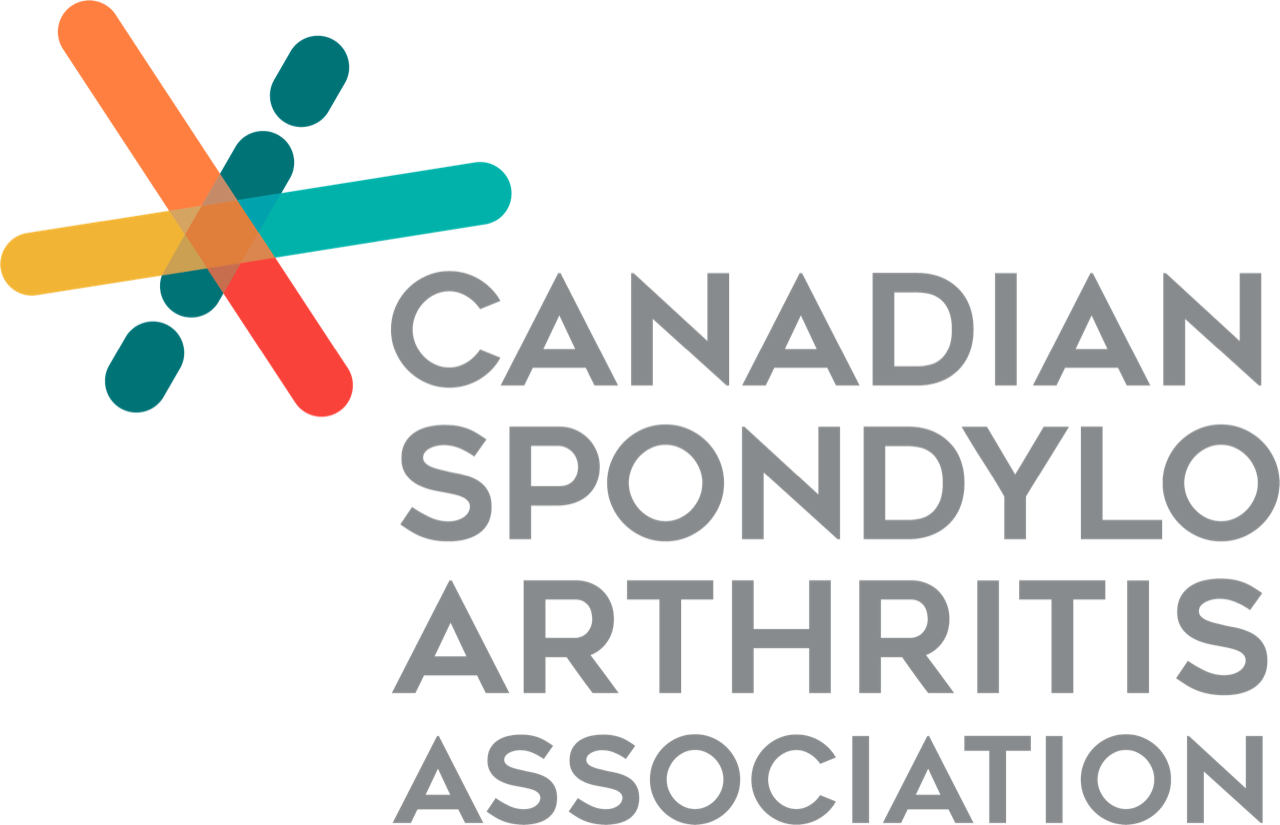Pharmacological Treatments in Canada

There are several classes of medications prescribed to treat Spondyloarthritis (SpA). We’ve put together these resources to better help you understand the different types of pharmacological treatments available to people with SpA.
Page Contents:
What is a DIN?
Drug Identification Number. Once a drug has been assigned a DIN, it means that it has undergone a successful Health Canada review process and is currently authorized for sale in Canada. It is an 8 digit number that can be found on the packaging of your medication. You are typically required to enter your DIN in order to access the online patient support group information for biologics and biosimilars.
Non-Steroidal Anti-Inflammatory Drugs (NSAIDs)
Non-steroidal anti-inflammatory drugs (NSAIDs) act by blocking the inflammation that occurs in the lining of your joints. They can be very effective in controlling pain and stiffness. Usually you’ll find your symptoms improve within hours of taking these drugs but the effect will only last for a few hours, so you have to take the tablets regularly. Some people find that NSAIDs work well at first but become less effective after a few weeks. In this situation, it sometimes helps to try a different NSAID. Like all drugs, NSAIDs can have side-effects, so your doctor will reduce the risk of these, by prescribing the lowest effective dose for the shortest possible period of time and selecting the best NSAID based on other health conditions you may have. NSAIDs can cause digestive problems (stomach upsets, indigestion or damage to the lining of the stomach) so in some cases NSAIDs will be prescribed along with a drug called a proton pump inhibitor (PPI) that will help to protect the stomach. NSAIDs also carry an increased risk of heart attack or stroke. Although the increased risk is small, your doctor will be cautious about prescribing NSAIDs if there are other factors that may increase your overall risk, for example, smoking, circulation problems, high blood pressure, high cholesterol or diabetes. The most common NSAIDs prescribed for AS include Naproxen
Conventional synthetic disease modifying anti-rheumatic drugs (csDMARDs)
csDMARDs are the first line of management along with NSAIDs, although they have not been shown to be very effective. These drugs aim to prevent AS from getting worse, and can take up to six months before you may notice any significant change. For some DMARDs you’ll need to have regular blood tests, and in some cases a urine test at regular intervals. The tests allow your doctor to monitor the effects of the drug on your condition but also to check for possible side effects, including problems with your liver, kidneys or blood count. You can take NSAIDs along with DMARDs, and some people may need to take more than one DMARD at a time. There are many DMARDs available, the most commonly prescribed is Methotrexate (Metoject®, Rheumatrex®, Methotrexate Sodium®, generics) and Leflunomide (Arava®, Generics). A newer DMARD that has been approved is Tofacitinib (Xeljanz®) which targets an enzyme responsible for inflammation. Other DMARDs that may be used in certain situations includes sulfasalazine (Salazopyrin®, various generics), azathioprine (Imuran®, various generics) , hydroxychloroquine (Plaquenil®, various generics) and cyclosporin (Neoral®, various generics).
Targeted Synthetic Molecules (tsDMARD)
* We have included in this section information on the Patient Support Programs (PSP) offered with each medication. These programs usually include financial support, often to offer a bridge until the patient’s insurance takes over reimbursement of the medication. Some PSP’s have other offerings to support patients. Each PSP is owned by the manufacturer of the medication and may vary from one company to the other.
Biologic response modifiers (boDMARD)
Patients with AS may not be adequately controlled by NSAIDs and DMARDs but can be treated by a new class of medications called biologic response modifiers, or biologics. These are prescribed by rheumatologists and are injected under the skin or given intravenously and work to prevent inflammation that may result from an overactive immune system.
Biosimilars (bsDMARD): New types of biologics have been approved by Health Canada. These are called “biosimilars”. As the name suggests, they are similar (but not identical) versions of a previously approved biologic medication. Biosimilars are modelled after a previously approved biologic but because they are large, complex, and made in living cells introducing some level of natural variation they are not identical.
What is the difference between biologic and biosimilar? Biologics are a class of treatments derived from living cells (proteins) that target specific parts of the immune system, and are proven to effectively treat many diseases. Biosimilars are similar but not identical versions of an existing or original biologic medication. The exact conditions for making biologics are not made public, so while biosimilars are made by the same process as the original biologic, there may be small differences resulting in variances in the product. Differences in techniques may include the type of cells used to produce them, the temperature at which the cells are grown, the pH at which the cells are grown, and the types of nutrition provided to the cells. Unlike generics, where the active ingredient is identical to the brand name drug, biosimilars are the same protein as the originator biologic but may have some small structural changes due to differences in production. Biosimilars and biologics have the same mechanism of action, meaning that they target the same biological pathway, and should result in the same benefits and risks with treatment.
Opioids
An opioid isn’t the first choice for treating chronic conditions such as arthritis. Aside from cancer pain, opioids more commonly are reserved for short-term pain relief, such as after injuries or surgeries. When other means of relieving arthritis pain haven’t helped, opioids may be prescribed. But safety and effectiveness are issues.
Corticosteroids
Corticosteroids are powerful anti-inflammatory drugs that relieve severe pain and swelling. You take them by mouth or in the form of injections into the joint. Corticosteroids are often used for rapid relief of symptoms in cases where only one or a few joints are affected. Steroid injections are often recommended for joints that are particularly troublesome or when ligaments and tendons become inflamed. Doctors typically prescribe only when really needed. If you use them for a long time, you could have serious side effects such as thinned skin, brittle bones, weight gain, and diabetes. The most common oral corticosteroids that may be prescribed is prednisone (various generics). For intra-articular injections, methylprednisolone (Depo Medrol®, various generics) is most commonly used.
Acetaminophen
Acetaminophen is used to treat pain associated with osteoarthritis and, sometimes, inflammatory forms of arthritis like Spondyloarthritis. It is taken orally in pill or liquid form.
Summary of Medications Available in Canada
We have include information on medications indicated for Psoriasis, Crohn’s and Colitis due to significant prevalence of these complications in Spondyloarthriti
Note:
N/A (Not Applicable) = No Notice of Compliance (or NOC) has been issued for this medication for this form of arthritis.
✓= used to treat this inflammatory arthritic condition
Disclaimer: This information is for educational purposes only. Always refer to your physician when looking into starting a new medication. Doses are approximate and based on the recommended adult dose. Doses may vary based on disease severity and individual needs. All the medications listed are approved by Health Canada in Spondyloarthritic conditions.
